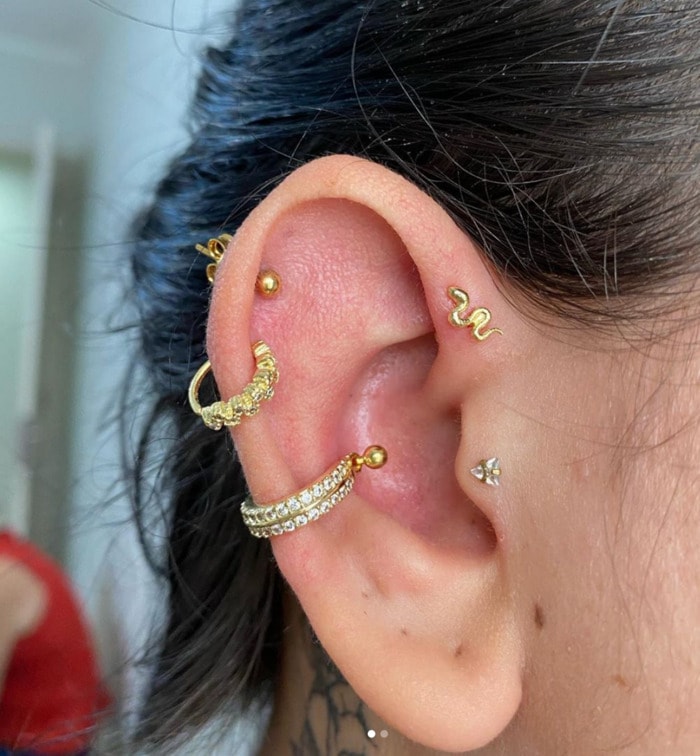

Helix Piercing Aftercare Tipsįor a healthy piercing, the aftercare must be seen as the most important process involved in getting a helix piercing.
#Helix piercing healing time skin#
Helix piercings heal on the outside first then heal on the inside, so when the skin on the outside seems normal you will still have to patiently wait for the inside of the helix to heal as well. Persons may take as long as a year to completely heal and that may be as a result of complications that arose during the healing phase from sores, bumps, to bacterial infections, or simply more sensitive skin.Īs long as a healthy aftercare routine is adopted by the recently pierced person, the helix will heal normally.

However, this is just an estimated time based on other people’s experiences after getting one done. It takes a helix piercing three to six months to heal normally. The ear cartilage is unique because of the low blood flow in that area, and this is what elongates the healing time for a helix piercing. Helix Piercing Healing TimeĪ helix piercing’s healing time is certainly one of the longest healing duration in comparison to other body piercings. It is important to note that the pain from piercings is a natural reaction from the body making contact with a sharp object and that proper healing and aftercare allows for a smooth transition to a normal piercing where jewelry can easily be removed and replaced. The forward helix is more delicate and likely to sting more in the piercing process and during the healing time as well. But there will certainly be some sort of discomfort from the first contact with the ear where the needle is piercing the helix.Ī forward helix piercing would definitely cause mode discomfort or pain when being done because of its location at the front of the curve that defines the helix area. It is impossible to accurately measure the pain that persons are likely to feel after getting a helix piercing, as people’s experiences and tolerance levels will vary often.

That never stopped anyone from getting a helix piercing, did it? However, if your pain tolerance is relatively low, it may sting during the piercing and the early stages of the hearing process. Instead, the helix piercing is of the least painful piercings to get, it ranks on the lower pain scale and might cause just a little discomfort for people with high pain tolerance. The helix piercing might seem rather complicated because of the area being pierced, but surprisingly it is not one of the most painful places to get pierced on the body. Below is detailed information discussing the piercing pain, healing time, and aftercare for helix piercings. These processes are pain, healing time, and aftercare. Piercings may appear as pleasing to persons who admire a certain aesthetic, but since it involves parts of the body coming in contact with needles that create what can first of all be likened to a wound, it results in pain and has to go through a healing process to become a comfortable part of one’s self.Ī helix piercing just like others undergoes three processes before the body completely adapts to its presence on the skin without complications. Helix piercings come in four other types such as double helix piercing, forward helix piercing, forward double helix piercing, and triple forward helix piercing. It stands out amongst the other ear piercings and you have come across this because you have taken an interest in it.Ī helix piercing is a piercing located on the upper cartilage of the ear, it could also be known as a cartilage piercing. The helix piercing is however the topic of interest here. The choices of jewelry also used on these different piercings are also interesting, to say the least. The way they suddenly gained popularity amongst the youth is rather intriguing. Different piercings located in different areas of the body have diverse fashion statements or symbolic meanings. Piercings are a bold, edgy, or cool way to accessorize one’s body.


 0 kommentar(er)
0 kommentar(er)
